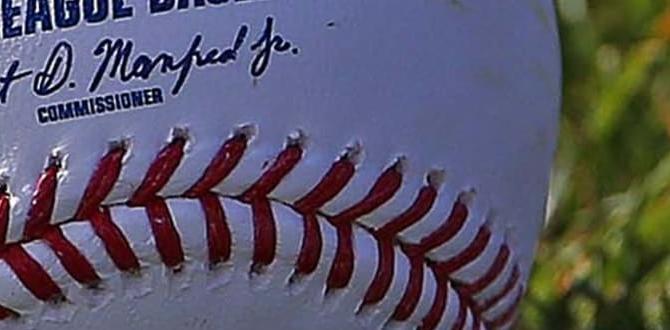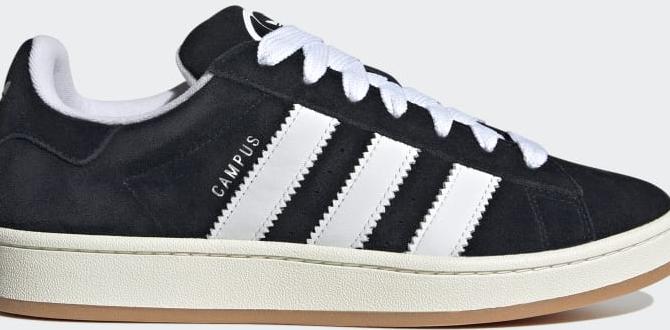Quick Summary: Looking for affordable catcher shin guards? You can absolutely find essential protection without breaking the bank. Focus on key features like fit, coverage, and basic padding to ensure safety and comfort for your young catcher, even on a budget.
Catchers Shin Guards Cheap: Essential Protection for Every Young Player
Every parent and coach wants their young catcher to be safe, but sometimes the cost of quality gear can feel overwhelming. Shin guards are a crucial piece of equipment, protecting those vulnerable legs from foul tips and errant pitches. It’s easy to feel stressed if you think you need the most expensive gear for good protection. But don’t worry! You can find excellent, affordable shin guards that offer the fundamental protection your player needs to feel confident behind the plate.
This guide will walk you through what to look for, where to find budget-friendly options, and why proper fit is key. We’ll break down the essential features that make a good pair of shin guards, even when you’re shopping on a budget, so your catcher can focus on the game, not on their shins.
Why Catcher Shin Guards Are Non-Negotiable
Think about a catcher’s position: they’re squatting, facing fast-moving baseballs, and often in the line of fire for anything that gets past the pitcher. Their shins take a lot of abuse. Foul tips can rocket off bats and hit directly on the shin. Wild pitches or passed balls can bounce unpredictably and collide with their legs. Without proper protection, these impacts can lead to painful bruises, nasty welts, and even more serious injuries like fractures.
Shin guards act as a vital buffer. They absorb the impact, distributing the force of the blow over a larger area and reducing the direct pressure on the bone and soft tissue. For young players who are still developing and may not have the same muscle mass or bone density as older athletes, this protection is especially important. It allows them to play with confidence, knowing their legs are shielded.
What “Cheap” Really Means for Catcher Shin Guards
When we talk about “catchers shin guards cheap,” it doesn’t mean we’re sacrificing all safety or quality. Instead, it means finding gear that offers the core essentials without unnecessary bells and whistles. High-end shin guards might have advanced materials for lighter weight, more intricate padding systems, or elaborate strapping mechanisms. Affordable options typically focus on reliable, durable materials and straightforward, effective designs that do the primary job well.
The goal is to find a balance. You want protection you can trust, comfort that allows for good mobility, and a price that makes sense for a beginner or youth player. We aren’t looking for flimsy plastic; we’re looking for smart buys that prioritize safety and performance without a premium price tag.
Key Features to Look For in Affordable Shin Guards
Even budget-friendly shin guards should have certain characteristics to ensure they offer adequate protection and a good fit. Here’s what to prioritize:
- Durable Outer Shell: Look for a sturdy plastic or composite material for the outer shell. This is the first line of defense against direct impacts. It should feel solid and not easily crack or dent.
- Adequate Padding: The inside of the shin guard should have sufficient padding. Foam or EVA padding is common and effective. It helps absorb shock and adds comfort against the leg.
- Good Coverage: Ensure the guards cover the entire shin bone from just below the knee down past the ankle. Some models have extended toe protection, which is a great bonus for added safety.
- Secure Strapping System: Adjustable straps (usually Velcro or elastic) are crucial for a snug fit. The shin guards shouldn’t slip or slide during play, as this reduces their effectiveness and can be uncomfortable. A minimum of two or three straps is usually ideal.
- Comfortable Inner Lining: A soft, breathable inner lining can add to comfort during long games or practices and help prevent chafing or irritation.
- Lightweight Design (as much as possible): While not the primary focus for budget gear, overly heavy shin guards can fatigue younger players. While you might not get the ultra-lightweight materials of premium gear, avoid anything that feels excessively bulky or cumbersome.
Finding Deals: Where to Buy Cheap Catcher Shin Guards
The market offers various places to find affordable catcher shin guards. Here are some recommendations:
- Sporting Goods Retailers (Sales & Clearance): Both large chains and local stores often have sales sections or clearance racks where you can find last season’s models or overstock at a discount. Check their websites too, as online sales can differ.
- Online Marketplaces: Websites like Amazon, eBay, and dedicated baseball equipment sites often have competitive pricing. You can compare many brands and models side-by-side. Read customer reviews carefully to gauge quality and durability.
- Used Gear Shops and Online Forums: For the absolute lowest prices, consider lightly used gear. Many players outgrow equipment quickly. Check local used sporting goods stores, or online groups and forums dedicated to baseball gear. Always inspect used gear for cracks, excessive wear, or damage to the padding and straps.
- Brand-Specific Sales: Following your favorite baseball equipment brands on social media or subscribing to their email newsletters can alert you to special promotions, holiday sales, and discounts.
- Youth League Equipment Packages: Sometimes, local youth baseball leagues or organizations partner with retailers to offer discounted equipment packages for their players. It’s worth inquiring with your league coordinator.
Popular Budget-Friendly Brands and Models to Consider
While specific models change and pricing fluctuates, certain brands are known for offering good value in the catcher’s gear market. When looking for “catchers shin guards cheap,” keep an eye out for these brands, often found at lower price points but still delivering on essential protection:
| Brand/Model Type | Typical Price Range (USD) | Key Features to Expect | Best For |
|---|---|---|---|
| Rawlings Youth Catcher’s Shin Guards | $30 – $50 | Durable plastic, good coverage, adjustable straps, often comes in sets with other gear. | U12 and younger players looking for solid protection. |
| Franklin Sports Youth Catcher’s Gear | $40 – $60 | Often feature lightweight designs, comfortable padding, and easy-to-use straps. | Younger players prioritizing comfort and ease of use. |
| Easton (Entry-Level Models) | $50 – $70 | Reputable brand, good construction, offers models that balance price and protection. | Players wanting a trusted brand name at a reasonable price. |
| Schutt (Youth/Entry-Level) | $45 – $65 | Known for durability, effective padding, and good fit. | Players who might be a bit rougher on gear and need lasting protection. |
| Generic/House Brands (e.g., from large retailers) | $25 – $45 | Basic but functional protection, often simpler designs. | Very budget-conscious buyers, practice-only use, or very young players starting out. |
Note: Prices are approximate and can vary significantly based on sales, retailers, and specific model versions. Always check current pricing.
The Importance of Fit: Making Sure They Stay Put
The best shin guards in the world are useless if they don’t fit correctly. When shin guards are too loose, they can shift during play, exposing vulnerable areas. If they’re too tight, they’re uncomfortable and can restrict movement. For budget gear, ensuring a proper fit becomes even more critical, as you won’t have advanced adjustability options found on more expensive models.
Here’s how to ensure a good fit:
- Measure the Leg: Have the player measure from the bend in their knee to the top of their shoe or cleat. This gives you a general idea of the length needed.
- Check the Coverage: When trying on (or looking at product dimensions), the guard should cover the entire shin bone. It shouldn’t be so long that it interferes with the knee or so short that it leaves a gap above the shoe.
- Adjust Straps Tightly: Fasten all the straps securely. The shin guard should feel snug against the leg without being painful. There shouldn’t be significant gaps between the guard and the leg.
- “The Wiggle Test”: Have the player do a few athletic movements—squat down, jog in place, flex their foot. The shin guards should stay firmly in place with minimal shifting.
- Consider Size Charts: Most manufacturers provide size charts based on age or leg measurements. Use these charts as your primary guide before purchasing.
Caring for Your Catcher’s Shin Guards
To get the most life out of any piece of equipment, especially budget gear, proper care is essential. Simple maintenance can prevent premature wear and tear:
- Wipe Down After Use: After each game or practice, especially if they’re muddy or sweaty, wipe down the exterior of the shin guards with a damp cloth.
- Air Dry: Never store shin guards in a damp equipment bag. Let them air dry completely in a well-ventilated area before putting them away. This prevents odor buildup and material degradation.
- Clean Straps: Occasionally, check the Velcro straps. If they lose their holding power due to dirt or debris, you can try cleaning them with a stiff brush or a damp cloth.
- Inspect Regularly: Periodically check for any cracks in the plastic, tears in the padding, or worn-out straps. Addressing minor issues can prevent them from becoming major problems.
Are There Any Downsides to Cheaper Shin Guards?
While affordable shin guards can certainly provide excellent protection, it’s important to be aware of potential trade-offs. These are usually minor for recreational and youth play, but good to know:
- Weight: Cheaper materials might be slightly heavier than the advanced composites found in premium gear.
- Durability Over Time: While they should last for a reasonable period, they might not withstand the same level of heavy use or abuse as higher-end models over many seasons.
- Fit Customization: The fit might be less forgiving, relying more on adjustable straps rather than contoured molding or advanced padding configurations.
- Breathability: Some budget models may not have the same advanced ventilation systems, potentially leading to warmer legs during play.
However, for beginner and intermediate players, these differences rarely impact safety. The core protection remains strong.
Understanding Baseball Safety Standards
When purchasing any protective gear, it’s reassuring to know it meets certain standards. In baseball, organizations like SEI (Safety Equipment Institute) certify equipment. For catcher’s masks and helmets, you might see certifications like NOCSAE (National Operating Committee on Standards for Athletic Equipment). While shin guards don’t always have the same rigorous individual certification as helmets, reputable brands adhere to established design principles focusing on impact absorption and coverage.
When buying shin guards, look for brands that are well-known in the baseball community. These manufacturers generally prioritize safety in their designs, even for their entry-level products. For more detailed information on general athletic safety standards, you could refer to resources from organizations like the OEUK (Oil & Gas UK) or the New York State Athletic Trainers’ Association, which often discuss the importance of appropriate protective equipment for injury prevention in sports.
Frequently Asked Questions About Cheap Catcher Shin Guards
Q1: What is the most important feature for cheap catcher shin guards?
A1: The most important feature is adequate coverage and a secure fit. The shin guard must cover the entire shin bone from just below the knee to above the shoe, and the straps must keep it firmly in place during play to ensure protection.
Q2: Will cheap shin guards protect my child from foul tips?
A2: Yes, well-made, affordable shin guards with a sturdy outer shell and sufficient padding will offer good protection against common foul tips for youth players. They absorb and distribute impact effectively.
Q3: How do I know if the size is right for my young catcher?
A3: Measure from the bend of the knee to the top of the foot. Use the manufacturer’s sizing chart. When worn, the guard should cover the entire shin, and it should feel snug without slipping when the player moves.
Q4: Can I buy used catcher shin guards?
A4: Yes, buying used gear can be a great way to save money. Just ensure you thoroughly inspect them for any cracks, deep dents, worn padding, or damaged straps. If they show significant wear, it’s safer to buy new.
Q5: How long should catcher shin guards last?
A5: With proper care, even budget-friendly shin guards can last a full season or more for a youth player. Lifespan depends on frequency of use, the player’s intensity, and how well the gear is maintained.
Q6: Are there any specific brands that offer good value for money?
A6: Brands like Rawlings, Franklin Sports, and entry-level models from Easton and Schutt often provide a good balance of price and protection for youth catchers. Always check current models and reviews.
Q7: Do I need shin guards for practice as well as games?
A7: It’s highly recommended. Practice is where players develop skills and often face pitched balls. Protecting your legs during practice is just as important for preventing injuries and building confidence.
Conclusion: Smart Protection for a Stronger Game
Equipping your young catcher doesn’t have to be an expensive ordeal. By understanding what truly matters—coverage, secure fit, and effective padding—you can confidently find “catchers shin guards cheap” that offer the essential protection they need. Prioritize these core features, shop smart by looking for sales and reputable budget-friendly brands, and always ensure a proper, snug fit.
Investing in affordable, yet reliable, shin guards is an investment in your player’s safety, confidence, and overall enjoyment of the game. With the right gear, your catcher can focus on framing pitches, blocking balls, and developing their skills, knowing their shins are well-protected. Get out there and have a fantastic season!




